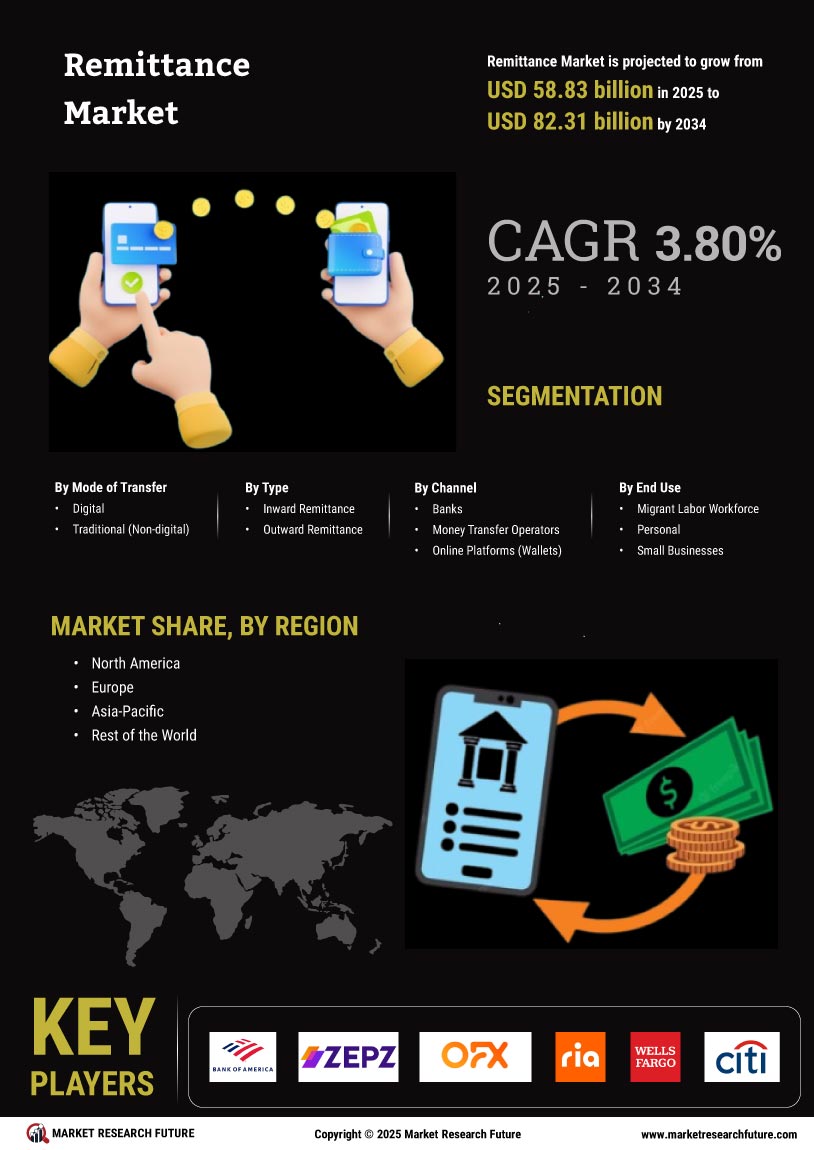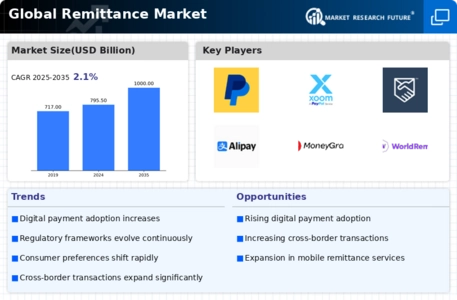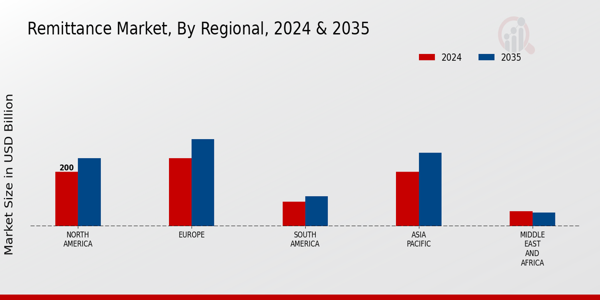Increasing Migration Trends
The Global Global Remittance Market Industry experiences a notable boost from rising migration trends. As individuals seek better employment opportunities abroad, remittances become a vital financial lifeline for families in their home countries. In 2024, the remittance inflow is projected to reach 795.5 USD Billion, reflecting the growing reliance on these funds for household consumption and investment. This trend is particularly evident in regions such as South Asia and Sub-Saharan Africa, where remittances constitute a significant portion of GDP. The continued movement of people across borders suggests that the demand for remittance services will likely persist, driving growth in the industry.
Chart Representation of Market Growth
Economic Development in Emerging Markets
Emerging markets are pivotal to the Global Global Remittance Market Industry, as economic development in these regions drives demand for remittance services. As countries experience growth, the need for financial resources to support local economies becomes increasingly apparent. Remittances often serve as a critical source of funding for small businesses and community projects. In 2024, the remittance inflow is expected to reach 795.5 USD Billion, underscoring the importance of these funds in fostering economic resilience. As emerging markets continue to develop, the reliance on remittances is likely to grow, further solidifying the industry's role in global finance.
Regulatory Support and Policy Frameworks
The Global Global Remittance Market Industry benefits from supportive regulatory environments and policy frameworks that promote financial inclusion. Governments worldwide are increasingly recognizing the importance of remittances in economic development and are implementing policies to facilitate cross-border transactions. For example, initiatives aimed at reducing remittance costs and enhancing competition among service providers are gaining traction. Such regulatory support not only encourages more individuals to utilize remittance services but also fosters a more transparent and efficient market. As a result, the industry is poised for steady growth, with a projected CAGR of 2.1% from 2025 to 2035.
Technological Advancements in Payment Systems
Technological innovations play a crucial role in shaping the Global Global Remittance Market Industry. The advent of digital payment platforms and mobile wallets has revolutionized how remittances are sent and received. These technologies facilitate faster, cheaper, and more secure transactions, appealing to both senders and recipients. For instance, the integration of blockchain technology is enhancing transparency and reducing transaction costs. As the industry adapts to these advancements, it is expected that the remittance market will continue to expand, potentially reaching 1000 USD Billion by 2035. This evolution indicates a shift towards more efficient and accessible remittance solutions.





















